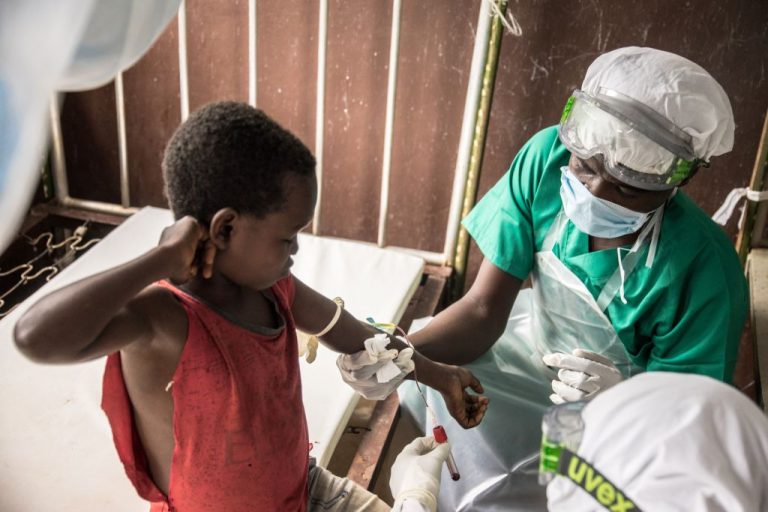European and North American health authorities are raising the alarm following outbreaks of a rare virus, monkeypox, in several nations. While the risk to the general population remains low, the outbreaks are surprising health authorities since outbreaks of the disease rarely appear outside Africa.
Monkeypox explained
Monkeypox, like many viruses, originates in wild animals like rodents and primates and on rare occasions can jump to human hosts. The majority of cases documented have been in central and west Africa where the disease is considered endemic, meaning it is prevalent to a particular locality, region, or people.
The disease was first identified in 1958 following two outbreaks of a “pox-like” disease in research monkeys. In 1970 scientists identified the first known human infection in a 9-year-old boy in a remote region of the Democratic Republic of Congo.
According to the Centers for Disease Control and Prevention (CDC) symptoms include fever, headache, muscle aches, backache, swollen lymph nodes, chills and exhaustion.
Within one to three days following the initial appearance of fever, the patient can develop a rash, often beginning on the face, that quickly spreads to other parts of the body.
Success
You are now signed up for our newsletter
Success
Check your email to complete sign up
Lesions then surface and progress through five stages before falling off. The illness typically lasts between two and four weeks.
According to the CDC, “In Africa, monkeypox has been shown to cause death in as many as 1 in 10 persons who contract the disease.”
People who have been exposed to the monkeypox virus are often provided one of several smallpox vaccines, which have been shown to be effective against the disease. Currently, antiviral drugs are under development to treat patients.
How prevalent is the disease?
Monkeypox has been on the radar of the World Health Organization (WHO) for some time.
The WHO estimates that there are thousands of monkeypox infections every year in around a dozen African countries; however the disease presents itself primarily in Congo, which reports some 6,000 cases of the disease annually. Nigeria is another hotspot, where authorities report around 3,000 cases per year.
Experts say, unreliable health monitoring systems in these countries suggest that the number of infected people is likely much higher.
The disease is known to emerge outside of Africa, as evidenced by the recent outbreaks. Past outbreaks have been documented in the United States and Britain and were associated with travel to and from Africa where close contact with infected animals is more likely.
The United States recorded its most significant outbreak in 2003 when 47 people from six states were confirmed to have contracted the virus. Experts believe the outbreak was as a result of exposure to pet prairie dogs that had been imported from Ghana.
What’s alarming about this outbreak?
The current outbreaks marks the first time authorities have observed the virus spreading among people who didn’t travel to Africa.
So far in Europe the disease has emerged in Britain, Italy, Portugal, Spain and Sweden. Since all the cases are not connected in some way, Britain’s Health Security Agency is suggesting that there are most likely multiple chains of transmission.
In Portugal, infections were first identified at a sexual health clinic when men sought medical attention for lesions on their genitals.
In Canada’s French speaking province of Quebec, authorities are investigating more than a dozen cases of the disease.
On May 18, Montreal public health officials flagged 13 cases in the city, following diagnoses made at three separate clinics specializing in sexually transmitted and blood-borne infections. Laboratory tests are currently being conducted and are expected back in the coming days.
In a statement provided to the Canadian Broadcasting Corporation (CBC) the Public Health Agency of Canada (PHAC) said it has yet to receive any reports of infections.
“PHAC has alerted provincial and territorial public health authorities and laboratory partners across Canada to be alert for and investigate any potential cases. As the situation evolves we will continue to keep Canadians informed,” PHAC said.
The first case identified in the United States was in a man who had recently traveled to Quebec, Canada.
PHAC says it is working in close collaboration with international partners, including the WHO, the CDC in the U.S. and the UK Health Security Agency (UKHSA).
Community transmission likely in the UK
According to the UKHSA the first known case in the UK was linked to a man traveling from Nigeria however, two of the most recent cases in the country, reported on May 18, could not be traced back to either travel or previously confirmed cases.
According to the UKHSA, the most recent cases, one in London and one in the South East of England, have led the agency to suspect that it’s possible “they acquired the infection through community transmission.”
“The 2 new cases do not have known connections with previous confirmed cases announced on 16, 14 and 7 May,” UKHSA said in a statement, adding that, “The virus does not usually spread easily between people. The risk to the UK population remains low.”
The virus is believed to spread through close contact and according to the UKHSA the cases that have been identified were “predominantly in gay, bisexual or men who have sex with men (MSM).”
The outbreak has prompted the UKHSA to advise individuals who are “gay, bisexual or MSM, to be alert to any unusual rashes or lesions on any part of their body, expecially their genitalia, and to contact a sexual health service if they have concerns.”
















